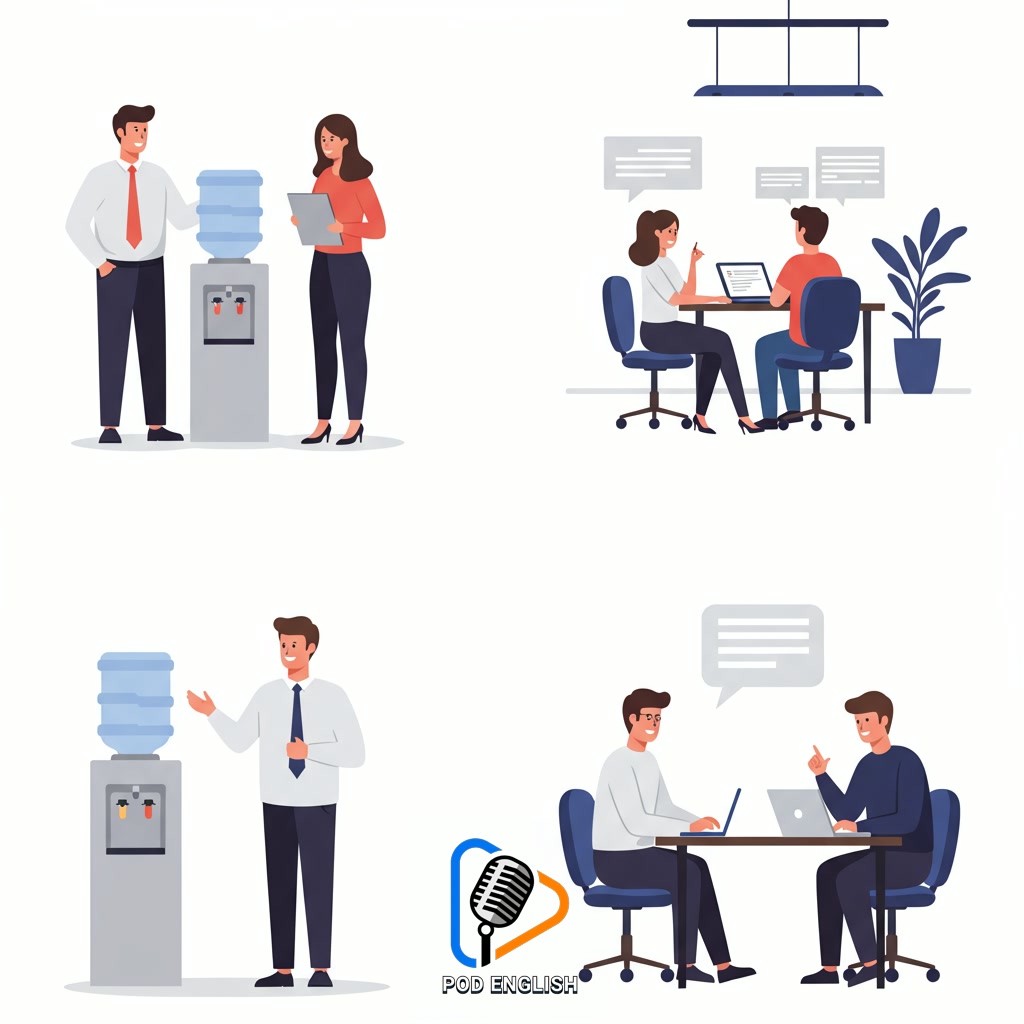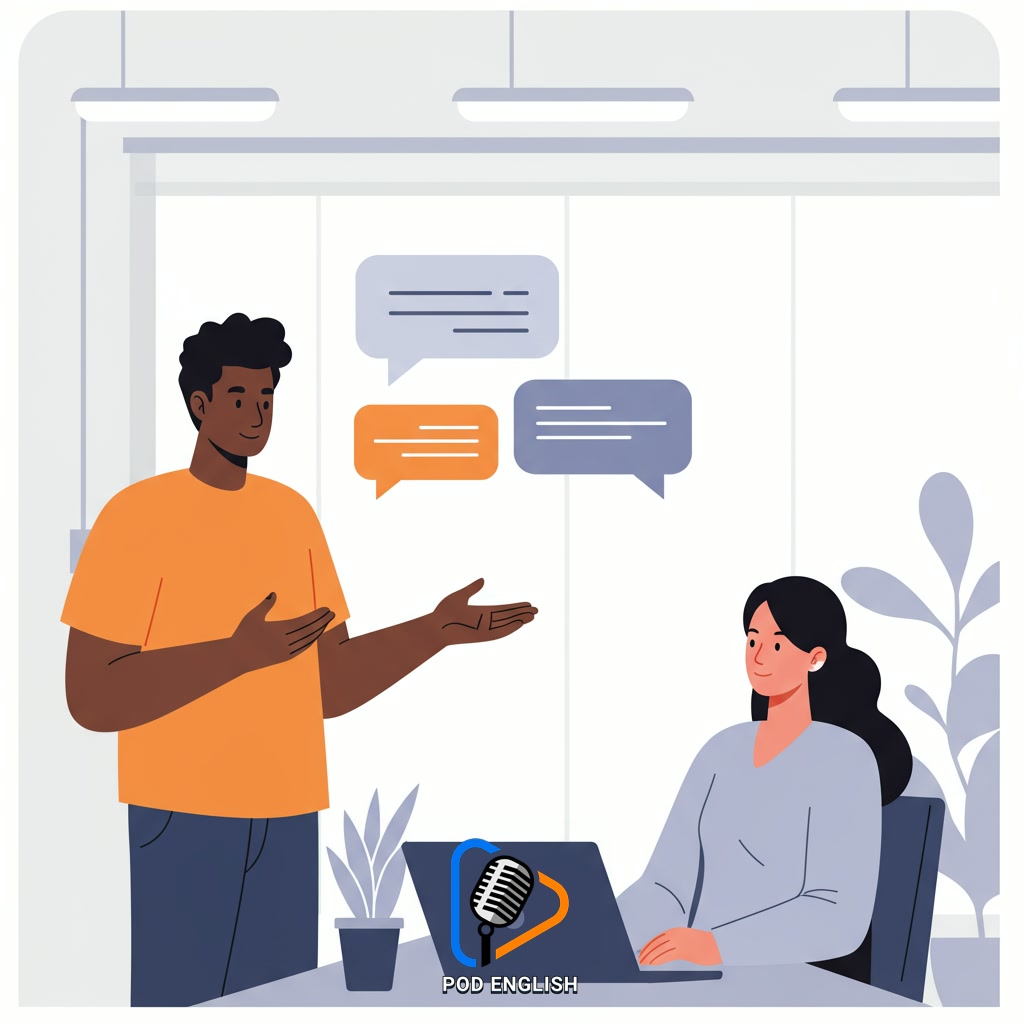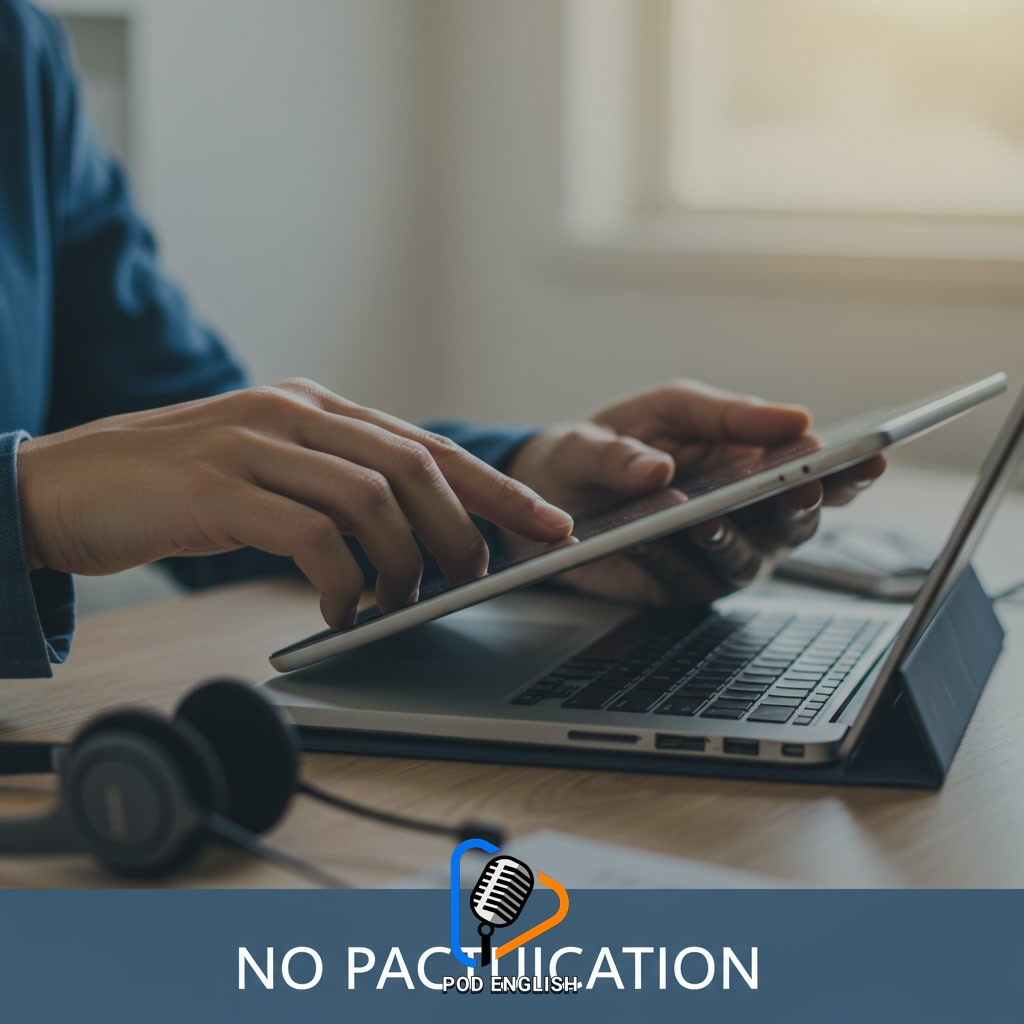Learn English
Everyday English at Work: Practical Conversations to Boost Your Communication Skills

This material is designed to help you learn English for professional settings. It presents practical examples through everyday conversations commonly encountered in the workplace. The focus is on enhancing your communication abilities relevant to an office or job environment. By engaging with these real-world scenarios, you can improve your fluency and confidence when using English at work.
Table of Contents
- Section 1: Introduction: Why Everyday English Matters at Work
- Section 2: Essential Vocabulary and Phrases for the Workplace
- Section 3: Practical Conversations: Common Work Scenarios
- Section 4: Boosting Your Communication Skills: Tips and Techniques
- Section 5: Handling Challenges: Difficult Conversations and Misunderstandings
- Section 6: Practice and Continuous Improvement for Workplace English
Section 1: Introduction: Why Everyday English Matters at Work
Welcome to this material! In today’s interconnected professional world, effective communication is paramount, and often, this means using English. While specialized jargon might be needed for specific tasks, mastering everyday English is the foundation for success in most workplaces. Think about your daily interactions: greeting colleagues, asking simple questions, participating in informal discussions, or understanding basic instructions. These commonplace situations build relationships, foster a positive work environment, and ensure tasks are completed efficiently. Good everyday English allows you to feel confident, express yourself clearly, understand others, and integrate smoothly into your team. This introductory section highlights why focusing on these practical, real-world conversations is crucial for enhancing your professional communication skills and thriving in your career.

Introduction: Why Everyday English Matters at Work
Section 2: Essential Vocabulary and Phrases for the Workplace
Building on the importance of effective English communication in the workplace, this section focuses on the fundamental building blocks: essential vocabulary and practical phrases. While general English skills are valuable, mastering specific words and common expressions is key to sounding professional and being clearly understood in an office environment. We will explore useful terms for everyday tasks such as greeting colleagues, participating in discussions, sending emails, and talking about projects. Learning these essential linguistic tools will significantly enhance your ability to communicate confidently and effectively in various work situations, making your interactions smoother and more productive.

Essential Vocabulary and Phrases for the Workplace
Section 3: Practical Conversations: Common Work Scenarios
Building upon the essential vocabulary and phrases, this section brings them to life through practical conversations in common workplace scenarios. You will see how English is used naturally in everyday office situations, such as asking for help, participating in a team meeting, making a request, or interacting with colleagues during a break. Each conversation provides realistic examples of dialogue you might encounter, allowing you to practice understanding and responding appropriately. By studying and practicing these practical exchanges, you will gain confidence in using English for real work tasks and improve your ability to communicate effectively with others in a professional environment. This hands-on approach helps bridge the gap between learning individual words/phrases and using them fluently in dynamic interactions.

Practical Conversations: Common Work Scenarios
Section 4: Boosting Your Communication Skills: Tips and Techniques
After practicing common workplace conversations, let’s focus on refining your English communication skills even further. Boosting your abilities means going beyond basic exchanges and learning how to communicate with greater clarity, confidence, and impact in various professional situations. This section is dedicated to providing you with practical tips and effective techniques that you can immediately apply. We will explore strategies such as active listening to ensure you fully understand others, speaking concisely and choosing the right words, and using appropriate tone and body language. Learning how to ask effective questions and provide thoughtful responses are also key aspects covered. By mastering these techniques, you will enhance your interactions, build stronger professional relationships, and feel more assured when using English daily at work.

Boosting Your Communication Skills: Tips and Techniques
Section 5: Handling Challenges: Difficult Conversations and Misunderstandings
Building on the foundation of common workplace exchanges, this section delves into the more complex aspects of communication: handling challenges, difficult conversations, and misunderstandings. In any professional setting, situations may arise where you need to discuss sensitive topics, address conflict, or clarify confusion. This requires more than just basic vocabulary; it demands specific phrases and strategies for expressing yourself clearly yet respectfully, active listening to understand perspectives, and navigating potentially tense interactions professionally. This chapter provides practical language tools and techniques to help you approach these challenging moments with greater confidence, ensuring that you can manage difficult discussions and resolve misunderstandings effectively in English, fostering better working relationships.

Handling Challenges: Difficult Conversations and Misunderstandings
Section 6: Practice and Continuous Improvement for Workplace English
Mastering workplace English is an ongoing journey, not a destination. This section emphasizes the critical role of consistent practice and continuous improvement in boosting your communication skills beyond basic interactions and challenging conversations. To truly enhance your fluency and confidence, you must actively seek opportunities to use English daily, whether through meetings, emails, or informal discussions. Learn from every exchange, especially from misunderstandings or difficult situations discussed previously. Utilize feedback from colleagues or supervisors, and make use of available resources like language learning apps or practice partners. Regular effort, even in small increments, builds muscle memory for language and prepares you better for any communication challenge you might face in a professional setting. Embracing this mindset of continuous learning is key to becoming a highly effective communicator at work.

Practice and Continuous Improvement for Workplace English













